Universitat de València scientific and medical collection. 2. Medicina i societat
.jpg)
College of Medicine and Dentistry.
This permanent exhibition includes a wide and significant selection of exhibits from the Medical and Scientific Collection of the University of València. In a new exhibition area at the College of Medicine and Dentistry, the show comes to complement the university’s exhibition ‘Scientific and Medical Collection 1: Science and Society’ held at Palau de Cerveró. This singular collection is thus presented in two complementary exhibitions at two closely linked university sites.
![Cytoscope, first third of the 20th century (cytoscope is a procedure which allows the doctor to visualise the inside of the bladder and urethra]](http://www.uv.es/cultura/images/exposicions/medicinaisocietat01.jpg)
Cytoscope, first third of the 20th century (cytoscope is a procedure which allows the doctor to visualise the inside of the bladder and urethra]
The collection dates back to the 1970s, its origin being the work carried out by Prof. López Piñero. The initially modest collection consisted of objects and instruments that belonged to the College and the Teaching Hospital. Thanks to the dedication and efforts of generations of lecturers and collaborators who worked in the institution over the past forty years, and as the collection grew with generous private and institutional donations, a great many temporary exhibitions have been possible.
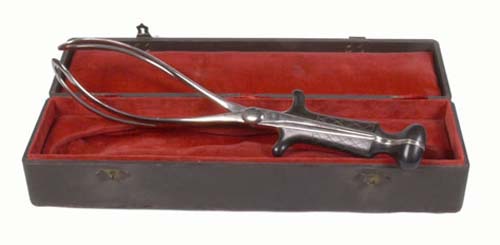
Naegele Forceps (Franz Karl Naegele, 1778-1851), second half of the 20th century
But unfortunately, in Spain scientific and technological heritage has not been given the same treatment as architecture or art. And the situation still remains imbalanced. When Prof. López Piñero created the collection, apart from safeguarding the heritage, he put the institution at the same level as the best History of Medicine institutes in Europe at the time. Most of them already relied on material and iconographic sources as well as printed and oral materials, archives and direct observation. Therefore, the original goal of the collection was to be useful at two levels: education and research. Nowadays, in a situation of deep crisis and with a change in values, many of these institutional collections –models in the past– are almost ‘dead’ and kept to a minimum, hence the importance of the University’s search for a different solution.
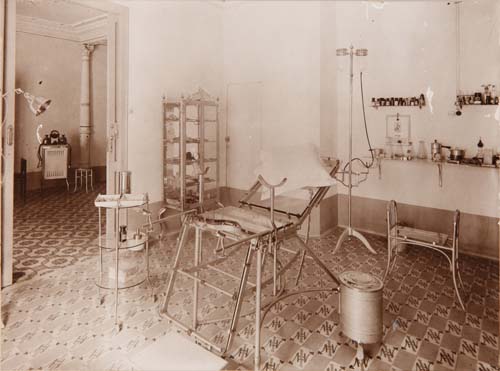
Francisco Paula Terrada’s toco-gynecology consultating room picture.
The two great traditions of Valencia are morphology and therapeutics. The exhibition starts by addressing the first one, making reference to the importance of the Vesalian movement in Valencia and to the meaning at the time of Crisóstomo Martínez’ Atlas anatómico, the work undertaken by Gómez Alamá, and Santiago Ramón y Cajal’s stay in our city and its consequences. Sections on Darwinism and therapeutics can be seen at López Piñero Institute of History of Medicine and Science, at the Palace of Cerveró.
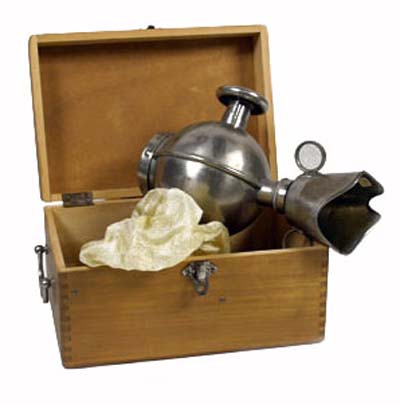
Ombredanne inhaler (Louis Ombredanne, 1871-1956), for surgical anaesthesia, first half of the 20th century
The second part of the exhibition is intended to illustrate how two apparently opposed trends –hospital and laboratory medicine– were assimilated in Valencia. As a common denominator, Laín Entralgo’s idea of the three ‘mentalities’ of pathology and clinical medicine is used: anatomo-clinical, physiopathological and etiological. In this way, viewers can see the three strata upon which contemporary medicine was erected. This section also includes elements related to the cholera epidemic that hit Valencia in 1885 and to the vaccine developed by Ferrán.
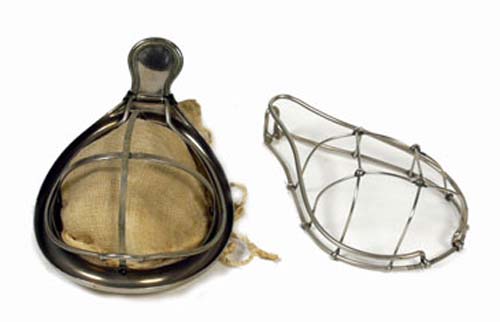
Schimmelbusch and Esmarch mask for chloroform, c. 1890-1910
Surgery also has a long tradition in Valencia, one that can be tracked down to the period that preceded the foundation of the university. The next exhibition areas are devoted to it, with exhibits before and after the so-called Surgical Revolution. Anaesthesia, haemostasis, antisepsis, and sepsis slowly entered the scene and changed the way operating theatres looked. New surgical avenues were opened up. The next section is about the construction of medical-surgical specialities. The invention of new instruments and the improvement of technology were responsible for the emergence of ophthalmology, obstetrics and gynaecology, otolaryngology and urology. Interesting materials from of all of such fields are shown, particularly from the inter-war period. Finally, the exhibition also includes dentistry, a degree also taught at the college.
As a useful teaching and learning element, a display cabinet shows human evolution and illustrates lesions typical in paleopathology or the study of ancient diseases through skeletal remains.
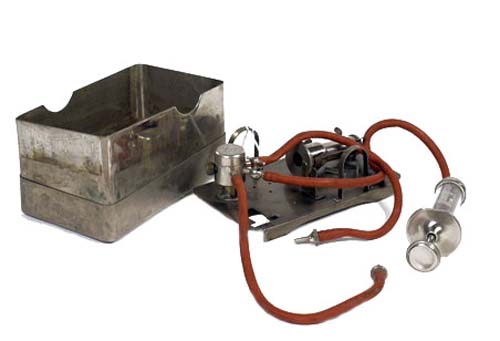
Tzanck Distributor (Arnault Tzanck, 1886-1954) for blood transfusions, first third of the 20th century
The exhibition is completed by busts, commemorative plaques, and the Collection of medical matter and large instruments, like the first electronic microscope used in La Fe Hospital.
In sum, the exhibition offers a selection of pieces that illustrate how Medicine developed in Valencia ever since the Renaissance, special attention being paid to original production and the assimilation of major trends.
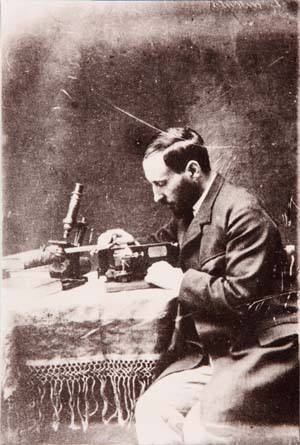
Santiago Ramón y Cajal portrait managing the microtome, 1884-1887
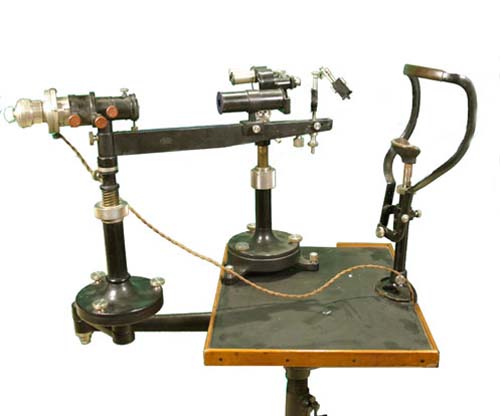
Slit lamp and Zeiss corneal microscope, developed by Alvar Gullstrand (1862-1930), early 20th century
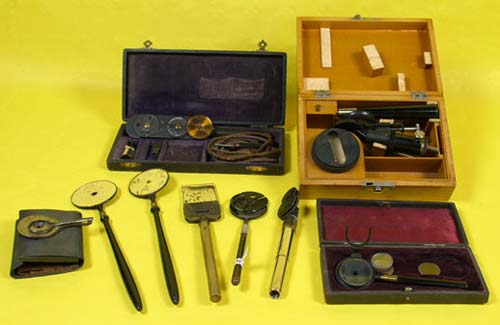
Selection of various ophtalmoscopies, at the end of the 19th century – early 20th century
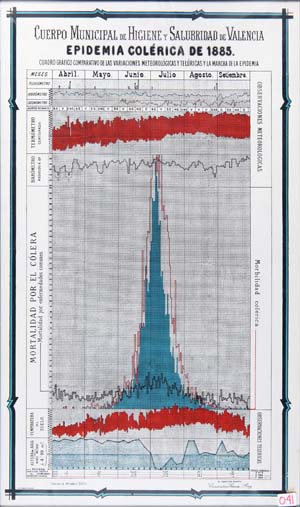
MIRALLES, comparative graphic chart of meteorological and telluric variations and the choleraic epidemic march in 1885 in the city of Valencia, lithograph, 1885.











